NAST "Scapegoat" PRESIDENT GRANT Cartoon 1876 "The Crowning Insult To Him Who Occupies The Presidential Chair," On The Scapegoating Of President Ulysses S. Grant.
https://www.britannica.com/biography/Thomas-Nast
EDITORS COMMENTS Below (from MEDIA STOREHOUSE)
The Nast: Grant Cartoon, 1876 print captures the essence of political satire during a tumultuous period in American history. Created by renowned cartoonist Thomas Nast, this artwork depicts President Ulysses S. Grant as a lion, symbolizing his strength and power. However, the image also serves as a scathing commentary on the scandals that plagued Grant's administration.
Nast cleverly portrays Grant as a scapegoat for the corruption and scandal that unfolded under his leadership. The lion's head is adorned with symbols representing various crimes and misdeeds associated with his presidency. This visual metaphor highlights how Grant was unfairly burdened with blame for these transgressions.
The Capitol building in the background further emphasizes the political context of this piece. It represents America's seat of power and authority, where decisions affecting the nation are made. By placing Grant within this setting, Nast suggests that even those occupying such esteemed positions can be subject to criticism and ridicule.
(I love these little details/animals (BELOW), on left side of “Scapegoat” by Nast.
Also “PRESS” grouping on rt.)
(IF YOU WANT TO READ MORE, CHECK OUT BELOW INFO ON GRANT, BY JOHN PATRICK WILLIAMS:
“GRANT’S THIRD CHARGE: A TALE OF SCAPEGOATING, ATONMENT AND AFFIRMATION DURING THE ERA OF RECONSTRUCTION (1863-1877”)
THIS DISSERTATION serves to shed new light on the continued effort by historians to reassess Ulysses S. Grant’s reputation as the eighteenth president of these United States.
Even though historical evidence supports the claim that Grant was inept as President, there exists a body of evidence suggesting that he was adept in other matters related to social justice and civil rights. More importantly, the corruption and scandals that stained his reputation blinded historians to the progressive nature of his presidency, such as his work to advance civil rights for African Americans in the Jim Crow South, a more moral and humane American Indian policy, and affirmative action for American Jews in a post-Civil War America.
All told, this dissertation by design will help us better understand the maligned enigma that is Ulysses S. Grant and his civil rights record, building on the work of other historians and scholars in order to broaden their chronology and add more sources to an already rich and engaging story.
(MORE CLOSE UP DETAIL FROM THOMAS NAST'S “SCAPEGOAT” 1876 DRAWING)
****

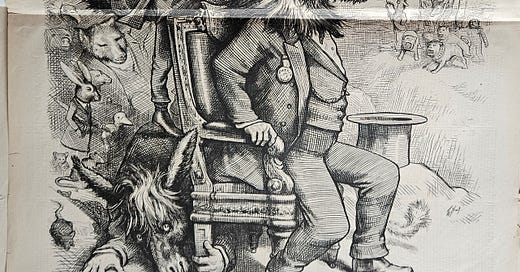



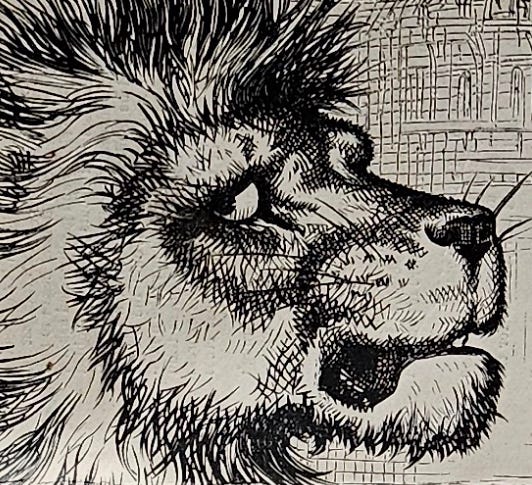
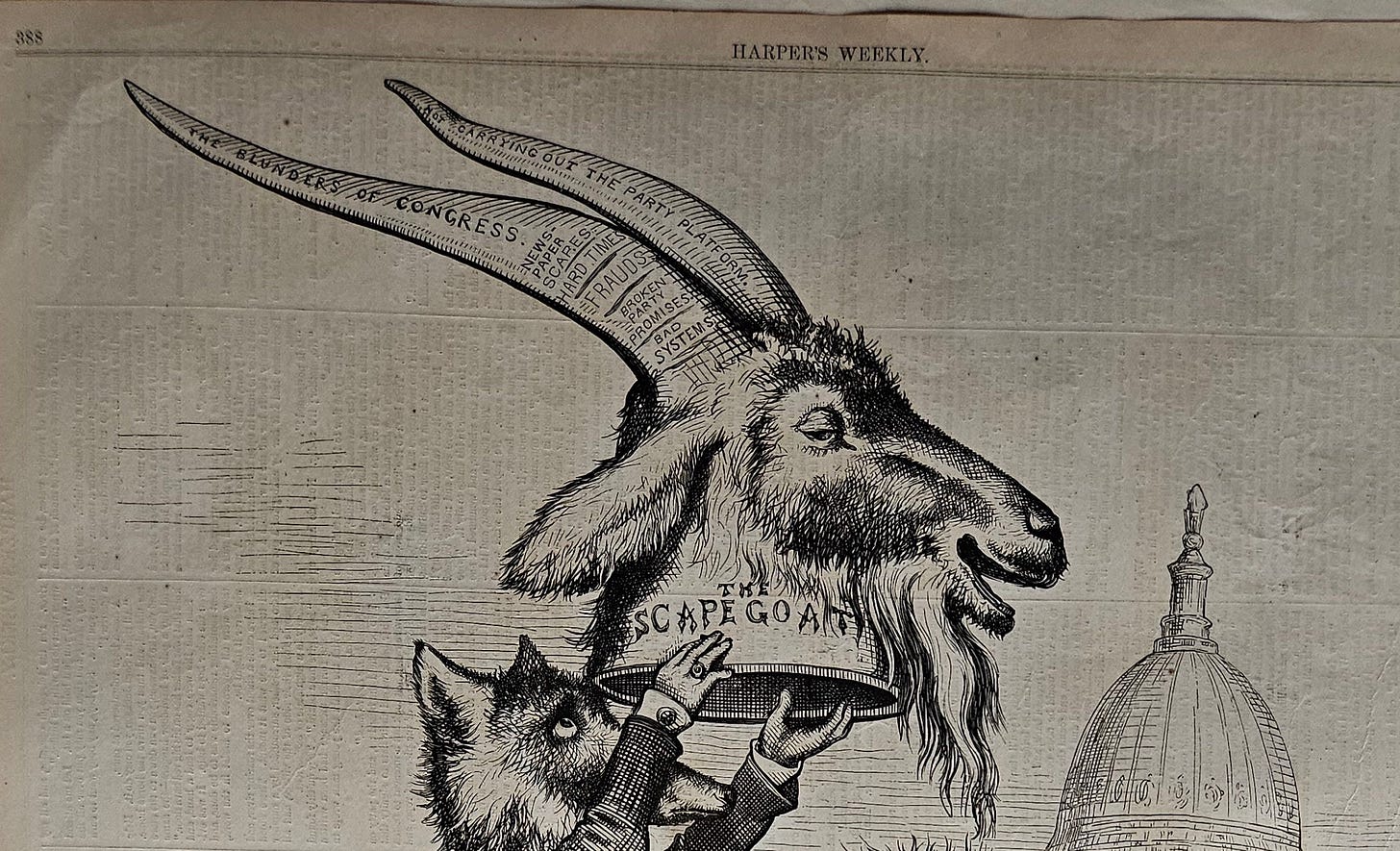
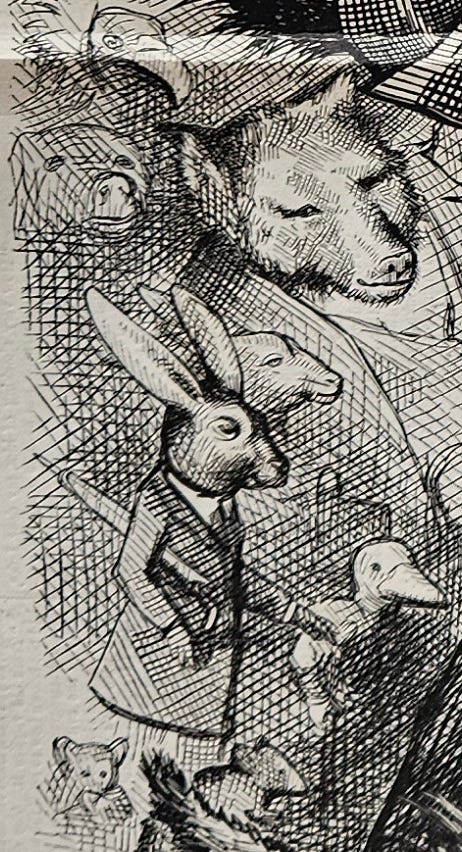
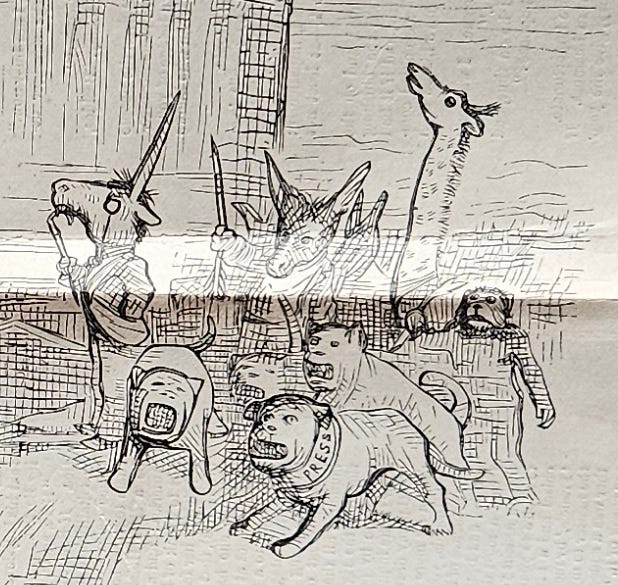
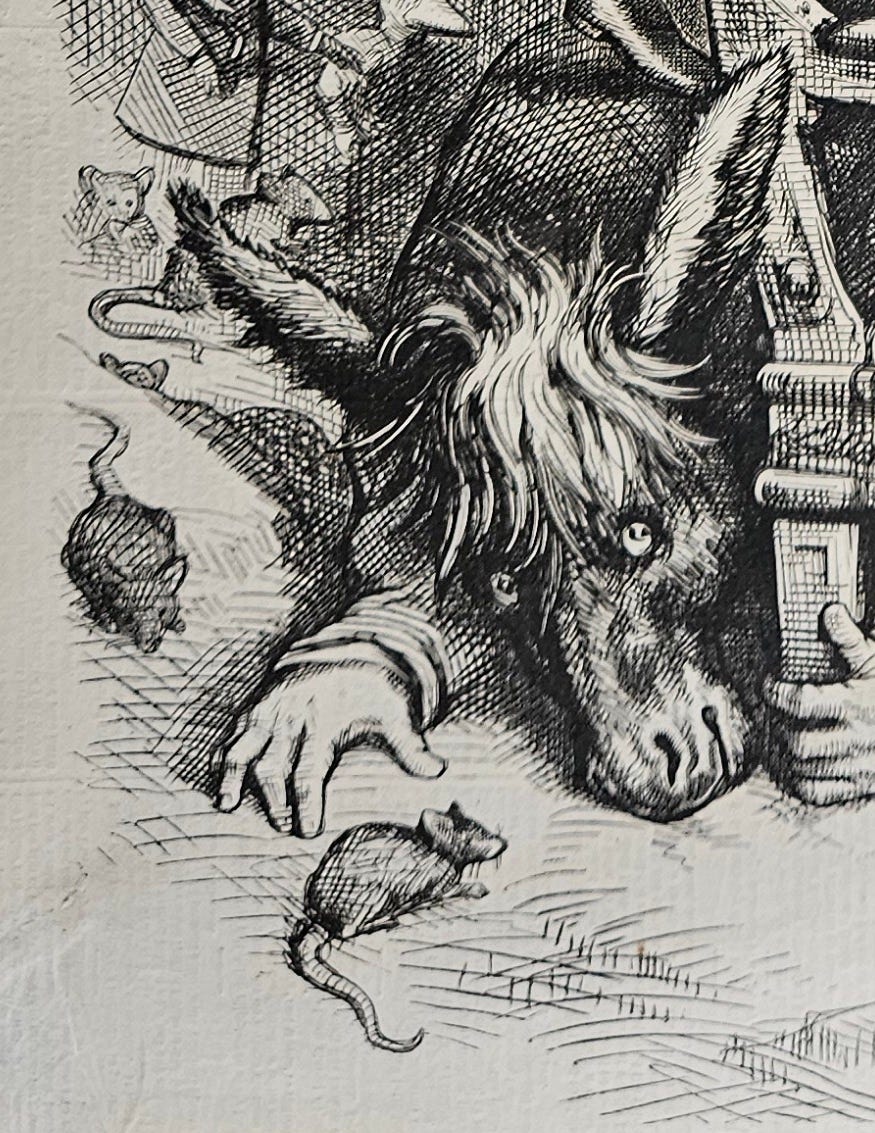
More amazing artwork! (And a reminder of why I will never really understand how anybody ever wants to be a politician.)